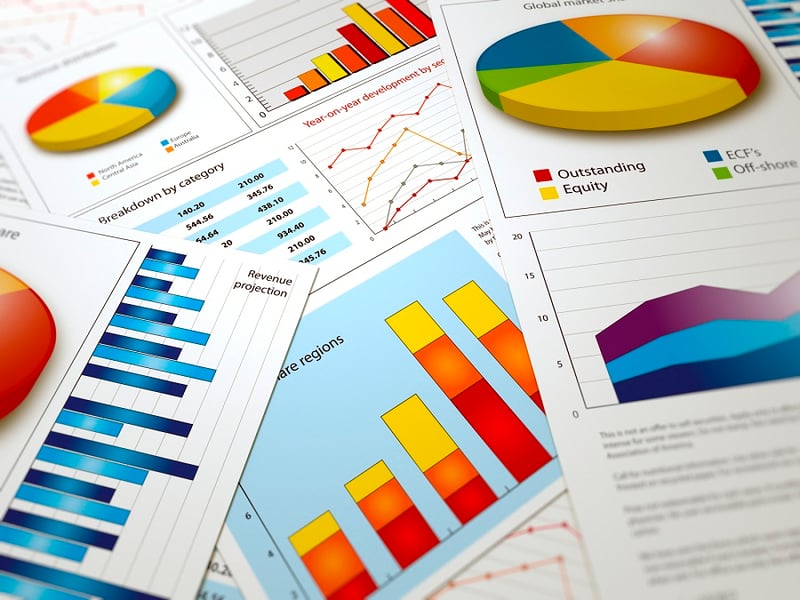While Morningstar Inc. won't take sides in the age-old passive-versus-active-management debate, it is stepping in to clarify some basic ground rules.
On Wednesday morning, at its
annual investment conference in Chicago, Morningstar rolled out the Active/Passive Barometer, a tool that compares the performance of actively managed mutual funds to that of a collection of comparable passive funds.
It is a subtle but significant distinction between the more common practice of comparing active funds' performance to that of a popular benchmark, such as the S&P 500 Index.
“Our approach is squarely focused on the performance of actual investible options,” said Ben Johnson, Morningstar's director of ETF research.
For example, instead of simply comparing the performance of a large-cap fund to the S&P 500, which gained 13.7% last year, Mr. Johnson is amalgamating the performance of 126 separate passive funds that offer actual large-cap exposure and charge fees.
In that case, the amalgamated performance net of fees last year was 13.07%, which compares to 10.8% for the large-cap blend mutual fund category.
The report, which Mr. Johnson said will become a semiannual project, generally gives the edge to passive mutual funds and exchange-traded funds, largely due to the higher fees charged by active funds.
Among the findings, actively managed funds underperformed their passive counterparts across nearly all asset classes, especially in the most recent 10-year period, and experienced higher mortality rates of funds merging or closing altogether.
Low-cost active funds were more likely to survive and outperform higher-cost active funds over the long term. But low-cost active funds still had lower average annualized returns compared with the average passive fund in nine of the 12 Morningstar categories studied in the report.
Over the most recent three- and five-year periods, 72.9% and 69.7% of active intermediate-term bond funds, respectively, beat their average passive peer.
No active equity category notched a success rate higher than 50% over the same time periods.
The release of the Morningstar research, which it dubbed “a new yardstick for an old debate,” followed a panel discussion that included that long-running debate.
Panelists representing The Vanguard Group, American Funds and Dodge & Cox generally agreed that, despite the ongoing banter pitting active management against passive products, it is rarely an either-or scenario when it comes to building investment portfolios.
“The debate is really about how do we work with active and passive strategies,” said Rob Lovelace, president of Capital Research and Management Co.
“All studies show that active managers do particularly well in down markets,” he added. “If you use passive funds, you get 100% of the downside.”
Diana Standberg, senior vice president at Dodge & Cox, said part of the problem with active-versus-passive comparisons is that they often only focus on the most recent time periods, as opposed to looking back over the past few decades across various market cycles.
“When you're measuring performance in shorter increments, it significantly overstates volatility,” she said. “We know that when you move to longer increments, the beta drops in active strategies.”
Panelists agreed with Mr. Johnson of Morningstar, the moderator, that fees are the biggest drag on active management when comparing them to passive funds. Along those lines, fees are becoming more telling and relevant than what has traditionally been used to define and evaluate active and passive funds.
“A lot of the pressure comes through fees, but there are active funds that have low fees, better returns and lower risk than some passive funds,” said Mr. Lovelace.
He referenced conversations with managers of target-date funds that will include some passive funds to lower their products' overall fees, and in doing so end up hurting performance or adding risk.
When asked about selecting an active fund, Mr. Lovelace recommended paying attention to the track record, particularly during down-market periods, and to look for managers that invest in their own funds.
Joseph Davis, principal at Vanguard, cited the fast and ongoing evolution of smart-beta, non-capitalization-weighted or active index strategies as evidence that “the adoption of index-based products is probably only in the third inning.”
But even with the popularity of smart-beta strategies, Mr. Davis said, “It is way too premature to say that active management is in danger.”
Against the backdrop of a six-year bull market that has favored passive strategies, the tide has clearly shifted in favor of passive investing, which is a trend that Mr. Lovelace believes is a mistake.
“Active management has been pushed out to the edge of portfolios and passive has become the core, but active management has to come back to the core,” he said.
Ms. Strandberg agreed, saying, “In 10 years, I hope we're going to be looking back and saying active management has redeemed itself in investors' eyes.
"It could be the case that interest rates finally do rise, and we'll see some fertile hunting ground in alpha,” he said.







